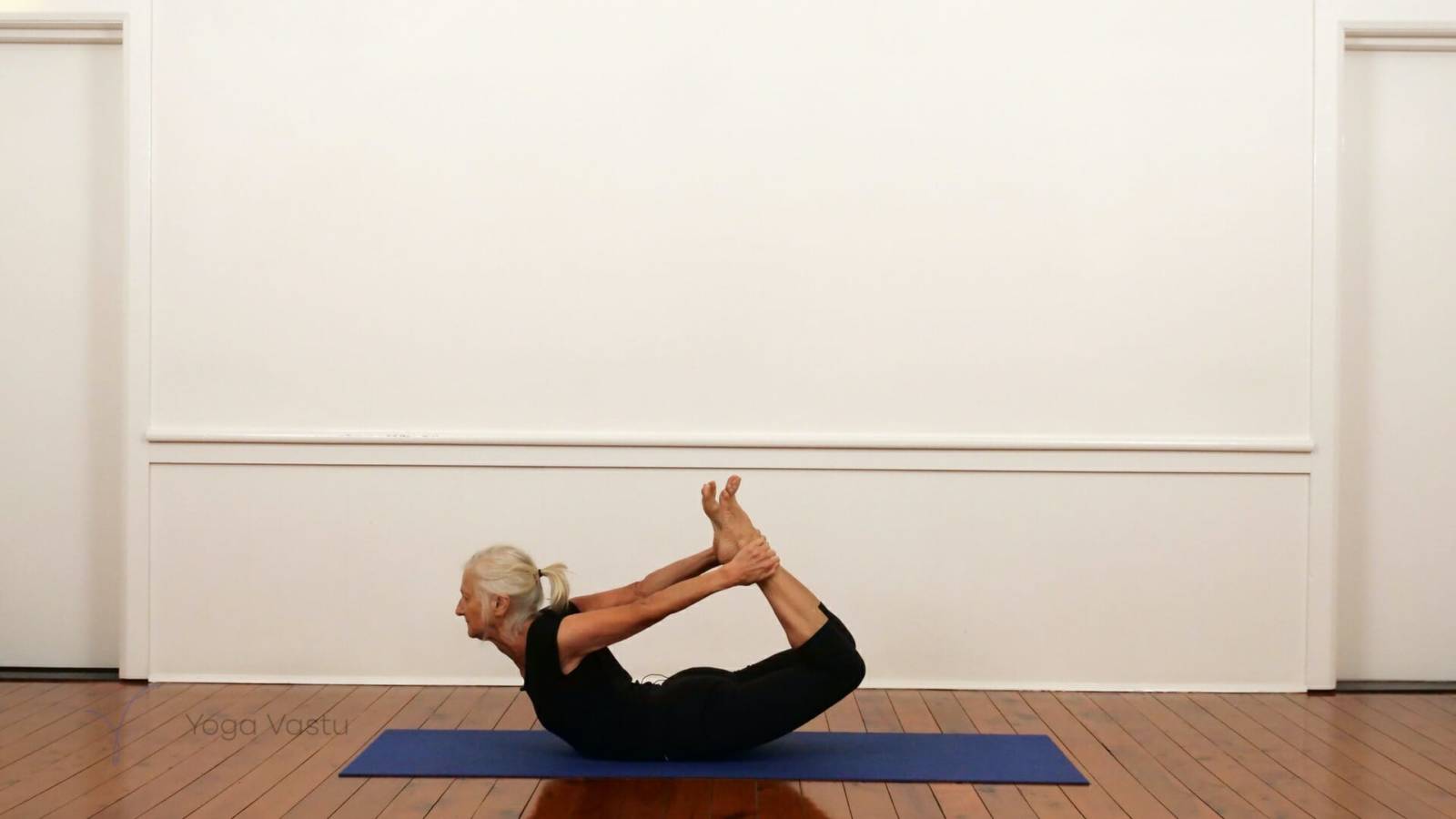To progress in backbends they do need to be practised regularly, not just once a month or so. They touch into the back body, which we don’t really contact in everyday activities. The extra bonus of backbend sessions is the energy and mood lift that comes with these poses. A certain mental clarity is also often experienced at the end of the practice.
Today, start in Supta Virasana (if possible), or Supta Baddha Konasana. For Supta Virasana use a bolster or folded blankets and place a brick under the buttocks to get a good opening at the front of the thighs. Use extra height under your mid and upper back as needed.
Virasana forward as you come up, and then stand for Uttanasana. Follow on with Adho Mukha Svanasana (Dog Pose) on the breath. This helps to get us motivated at the beginning and to find a rhythm to our breath and practice.
Adho Mukha Vrksasana (Full Arm Balance) or modification, and Pincha Mayurasana come next. These two inversions address our mental energy and often help us further dispel any sluggishness that may be still holding us back.
A few standing poses with the ball of the front foot up the wall: Trikonasana, Parsva Konasana, Virabhadrasana 1 with the front foot up to help engage the leg into the hips and create a resistance that we can work against to go a little deeper. Prasarita Padottanasana to bring the head down towards the floor in preparation for Sirsasana (Headbalance).
Go up into Sirsasana, or preparation with a block and then walking up the wall. This modification helps to teach us how to use the arms to lift the shoulders, and to keep the legs and hips connected even in an inversion.
The preliminary backbends first: Adho Mukha Svanasana (Downward Facing Dog) to Urdhva Mukha Svanasana (Upward Facing Dog) and then going into Urdhva Mukha Svanasana using two blocks (or other supports) to find a better lift in the chest and opening into the upper back region; Bhujangasana coming more specifically into the upper back, followed by Salabhasana where we lift the legs and arms against the resistance of the buttocks holding down towards the floor. Dhanurasana to strengthen the paraspinal muscles is another “resistance” backbend pose.
Now come up onto the knees for Ustrasana, using a block placed lengthways on the inner thighs. Here we start to arch backwards from a semi-upright position. Feel the holding of the legs which helps to support the spine as it curves into a backache. And then set up for Chatushpadasana, going up and down on the breath a few times and then holding, either the hands to the ankles or using a belt around the ankles.
Take a chair (if you have a sturdy one handy) and slide the upper back over the backrest of the chair to open the chest from a standing position. Modification is given if no chair is available.
And now come into the full Urdhva Dhanurasana, 5 times from the floor, using blocks at different heights to get more lift into the upper back. Feel the exhilaration of these poses, even when they are not yet fully accessible. It will come.
Now release the back with Uttanasana with a block between the legs, Parsva Uttanasana, Adho Mukha Svanasana with the block. Lie back for Supta Padangusthasana 1 and 2 with a belt onto the heel of the raised leg to spread the back muscles and to connect the legs into the pelvis to bring a feeling of stability.
Finish with Ardha (half) Halasana with the legs supported onto a chair or bench, or legs up the wall with the buttocks resting onto a makeshift support consisting of two blocks and folded blankets.
Savasana in simple cross-legs today.
Equipment required
- Mat
- 2x Block
- Belt
- Blanket
- Chair
Illustrated sequence of video
Download and print the free illustrated sequence of this video.

